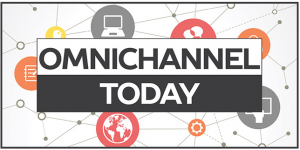[av_textblock size=” font_color=” color=” custom_class=”]
[av_textblock]
A Plea for Omnichannel Support from Brands
I purchased my first, and last, piece of workout equipment almost about five years ago. It was one of those pull up contraptions you hang over a door in seconds and it changes your life forever. Several weeks before I made the purchase, my email was swamped with retailer ads for exercise equipment, the latest Nike cross trainers and fitness apparel. The online coupons and retail discounts for these items wouldn’t stop – clearly the tire around my waist somehow made me a prime target.
January 1st was right around the corner. It was now or never. I had no choice, but to follow through and make that life-changing purchase! My equipment arrived and I was ready to embark on my journey towards fitness I go on every couple of years. Long story short, a month and a half later, the pull up bar became a coat rack and towel hanger.
A month or two later, what happens? In the dark ages, before apps and OmniChannel, there was very little support to carry us beyond the first couple of “honeymoon” months. Gradually, we’d tiptoe back to our old bad habits and couch potato lifestyle. Today I think we need to ask for help. Not from the personal trainer at the gym, but from the brands that surround us everyday.
OmniChannel Personalization – Your New Accountability Coach
Companies are turning to hyper-personalization and tech to help people meet their New Year’s Resolution goals. Technology now gives you the ability to connect your phone, wearable activity trackers and apps to your gym’s equipment and that treadmill at home. You can compare yesterday’s workout with today and share your progress on social sites like Facebook. You’re able to keep track of your daily activity, food intake, weight and sleep. You get suggestions for that perfect piece of gear or accessory based on what stage you’re at in the journey. For those of us working our way into bad shape we’re going to see meal replacements and Gatorade Chews. We’re hopefully spared the ads for toenail loss and bleeding nipple solutions that our marathoner friends are receiving (I’m still amazed by you folks).
Today, the digital support system is personalized to fit your lifestyle whether you’re getting into shape or sharpening your time management skills. For me, and the majority out there, that’s the key to success. Whatever bit of digital assistance or support that streams to my device should fit me like a custom tailored suit.
Mar-Tech Platforms Make It Possible
In order to get that custom fit, you need measurements. Well, in the world of OmniChannel, you need data. Personalization Platforms like NectarOM take that concept to another level. NectarOM constantly thinks about the online and offline relationship a brand has with shoppers and blends that marketing channel data with transaction data to provide the best content recommendations possible. The content could come in the form of a new product recommendation, but it could just as easily be a recipe, a social comment, an inspirational message to help you overcome that 21-day slip, or a one-to-one discount to help you choose better grocery items. This omnichannel data is pulled from every channel including logins, social sites, email, websites, purchases, browse history, etc., to understand your specific needs. NectarOM stitches all of those data points together to create a 360-degree profile of a specific customer’s needs.
That profile is what separates you from the millions of others out there. It also tells a brand when you could use that nudge to follow through on your New Year’s Resolutions which comes in the form of automated emails, app push messaging, a personalized website and one-to-one marketing campaigns presented in real-time.
The Road to Success
These Mar-Tech platforms put a new bonus on brands. My profile can’t be something viewed in the context of a promotion or a campaign, but rather my entire life. As an example, my profile has to reflect my daily routine. Let’s face it, as the day progresses, my needs and wants change. I’m not the same person at the office as I am at home. I don’t need a ton of reminders or a motivational boost at 2 p.m. during a meeting. I’m going to need those five hours later when I’m at home debating whether I should spend half an hour trying to get an ROI on that pull up bar or wallow in a heavy dose of Netflix. At the same time, when I stumble on major life changes, I want my digital world to keep up. If my schedule changes, so does my fitness routine.
Omnichannel personalization is necessary for sticking to those New Years Resolutions. We will continue to provide information about ourselves and our journey, but brands need to become our new personal trainer and an improved source of accountability. New Balance is now our cheerleading squad.
Avocados From Mexico is a part of our squad of dieticians. Under Armour matches us to others who are striving towards the same goals and keeps us connected. These are the new hands that swipe the pint of Chunky Monkey ice cream from our hands and keep us focused. If the brands don’t do their part then treadmills sit dormant collecting dust, the pull up bar moves to the closet and we all say, “Well, I’ll do better next year.”
[/av_textblock]









